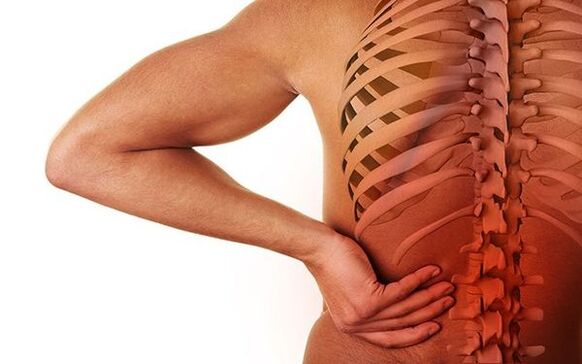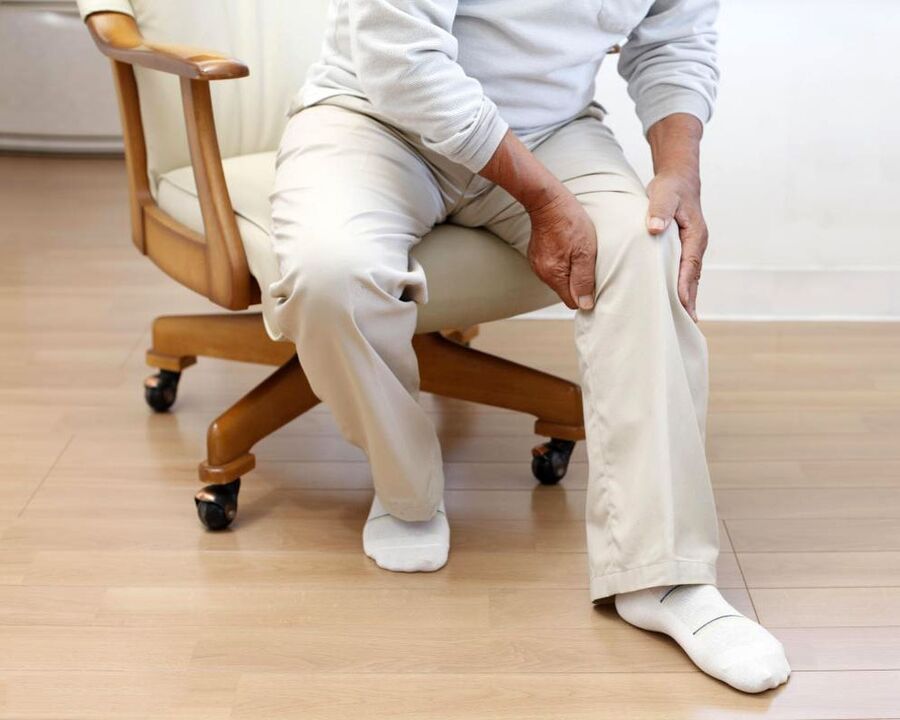Osteochondrosis most often has a long course. Therefore, the first signs in men and women can appear years after the onset of the pathology. Since pathology leads to many complications, timely treatment and diagnosis of the disease will help slow down negative processes in the body.
As a result of osteochondrosis
Diagnosing osteochondrosis in a timely manner is a necessity that almost everyone faces.
This is explained by the fact that this disease causes certain disturbances in the body and when it develops, complications can affect various parts. The most common of them are:
- Intense headache up to migraine;
- Partial hearing loss;
- Decreased visual ability;
- Radiculopathy (aka radiculitis);
- VSD or various autonomic dysfunctions;
- Genitourinary system dysfunction;
- intervertebral hernia;
- Sciatica;
- Spondylosis, osteophytosis;
- Spondyloarthrosis;
- Lumbodynia and lumbago;
- Spinal stenosis.
This complication develops due to impaired blood circulation and conservation in the spine, which creates a negative effect on internal organs and departments.
In severe cases, there are negative effects on the heart and lungs, which can trigger a heart attack, heart attack, stroke, etc.
The first signs
There are certain first signs that the pathology has begun to develop.
Patients most often ignore them, consider them unimportant and associated with lifestyle - prolonged sitting, too much energy, heavy lifting.
Usually this is true, but it is these factors that trigger the progress of osteochondrosis.
As a result, it begins to be felt with several symptoms.
Light stiffness in the morning is not noticeable, but as it develops it will occur more and more often. Mobility of the affected area may gradually decrease. Also, with a strong load, discomfort will begin to appear. In the first stage, such pain is usually not noticed. It starts from the second level.
Cluster of symptoms
Symptoms of osteochondrosis will develop as it progresses. Accordingly, doctors divide them into several groups according to the mechanism of development. In this way, it is possible to identify the part and type of tissue most affected.
Static syndrome
Static syndrome refers mainly to disorders in bone tissue. As a result, the shape of the vertebrae changes, which leads to the deformation of the spinal column with the development of various types of curvature. In this case, pathological mobility of the vertebrae is observed. Bad posture manifests itself:
- Kyphosis;
- Kyphoscoliosis;
- Scoliosis;
- Lordosis.
As a result of static syndrome, joint mobility is often affected. In advanced cases, the patient cannot turn his head or straighten it completely.
Neurology

A complex of neurological symptoms is caused by damage to nerve tissue. At the same time, initially, the sensitivity of some areas of the skin is only affected. Limb motor ability and muscle contraction strength are also reduced.
But the main manifestation of the neurological syndrome is pain of varying intensity and localization. It is provoked by compression and irritation of roots originating from the spinal cord. In the first stage, it usually shows itself only as a local discomfort. As the pain syndrome progresses, it spreads further to areas of the body that are innervated by the affected roots. There is often numbness, tingling, goosebumps, and impaired skin sensitivity.
Motor changes in this pathology are observed less often than sensory. Depending on the degree of development of osteochondrosis, paresis and even paralysis may make themselves felt. An example is paresis or limited voluntary movement of the lower limbs on both sides due to lumbar osteochondrosis.
Vascular
Vascular symptoms appear for more or less the same reasons as neurological symptoms. That is, the veins and arteries are compressed by the vertebrae, which leads to the development of the corresponding symptoms.
This effect most often manifests itself in cervical osteochondrosis. In this section there is a maximum number of large ships. As a result of the negative impact on them, hypoxia of the brain begins to develop, which can cause nausea, dizziness, loss of consciousness, impaired hearing and vision.
If the tone of the sympathetic system of the central nervous system changes, then the irritation of the nerve plexus increases. Since it is located in the spine, the result also affects the blood vessels.
The most common manifestation of this disorder is relatively prolonged spasm of peripheral vessels, followed by chronic ischemia and oxygen starvation of internal organs.
Tropical
A combination of the previous three syndromes can cause other disorders, especially trophic syndrome. With a decrease in tissue nutrition, as well as disruption of the preservation of certain parts of the skin, ulcers may appear. In this case, neurological and vascular factors play the biggest role.
Pathological manifestations
Osteochondrosis can manifest itself with a different set of symptoms. This is explained by the fact that certain departments affect certain areas, and therefore the signs of the disease may differ from each other.
Cervix
Cervical spine is characterized by symptoms such as:
- Dizziness and even fainting when turning the head suddenly;
- Pain in the shoulders, arms, chest, teeth;
- Spots and spots in front of the eyes;
- Deterioration in the function of vision and hearing, ringing in the ears;
- Changes in voice and tongue numbness;
- Headaches that usually get worse with movement. Analgesics should not affect its intensity.
Such symptoms can be present for a long period of time and during exacerbations. Some signs are often confused with other pathologies, for example, dental or ENT problems.
chest
With thoracic osteochondrosis they make themselves felt:
- Pain when bending over, raising a hand or one arm, between the shoulder blades and in the chest area (often confused with heart pain);
- Increased pain at night, as well as with movement, hypothermia, increased physical activity;
- Increased pain when moving the chest (exhalation and inhalation);
- Disorders of conservation of certain areas, numbness and tingling of the skin;
- Itching, burning, coldness in the legs;
- Painful attacks in the ribs when walking;
- Chest feeling compressed by a loop, shortness of breath.
Thoracic osteochondrosis in the manifestation of pain syndrome is rich in localization. But it is because of the greatest involvement of the chest that many confuse it with heart attacks and heart attacks.
Lumbar
Lumbar osteochondrosis mainly affects the function of internal organs of the pelvis and lower legs, although it can also cause pain in the chest area. The most common symptoms of the disease:
- Sharp pain and pain in the lumbar region;
- Increased pain with movement or exertion;
- Pain in the abdominal organs, legs, sacrum;
- Conservation disorder in the lower part of the foot;
- Inability to perform certain movements, such as bending and turning;
- Desire to maintain a certain posture.
When the lumbar region is affected, exacerbation most often occurs under the influence of certain external factors, for example, with increased load, heavy lifting, or hypothermia. In this case, many people say "the back is stuck. "The mobility of the department is reduced to a minimum during a painful attack.
joints

Osteochondrosis of the joints manifests itself:
- Reduced mobility of the affected area (often shoulder, hip or knee joints);
- Severe pain;
- Increased pain when moving or lifting a limb;
- Range of motion is significantly reduced;
- Formations in the articular and soft tissues can be observed during palpation;
- Swelling of the affected area;
- A feeling of redness, numbness, pins and needles in the skin.
Due to damage to the joints, a person is forced to take a forced position to reduce joint movement and, thus, pain. If symptoms persist, they can cause soft tissue disorders, including atrophy.
Pain syndrome
Pain in osteochondrosis in the first stage is usually temporary. As they grow, they become longer and more intense. The result is a general presence of pain in everyday life.
The pain is usually nagging, aching in nature. During an exacerbation, the symptoms are so strong that they can prevent you from moving completely, causing muscle spasms.
Prediction
If we talk about the prognosis, then osteochondrosis itself is an incurable disease. In the early stages, there is an opportunity to provide high-quality treatment and slow down the pathology before serious symptoms develop. The more pathology develops without treatment, the greater the negative impact on the body. Accordingly, home treatment becomes less effective and takes longer. If the pathology continues to the level of serious complications, surgical intervention may be necessary.



















